
Imagine having an abundance of succulent raspberries within arm’s reach, all grown in the convenience of your own backyard. With container gardening, you can transform your limited space into a fruitful haven. In this comprehensive guide, you’ll learn the secrets to successfully growing raspberries in containers, from choosing the right variety to providing the ideal growing conditions. Whether you’re a gardening enthusiast or a beginner with limited outdoor space, this ultimate guide will empower you to create a thriving raspberry paradise right on your doorstep.
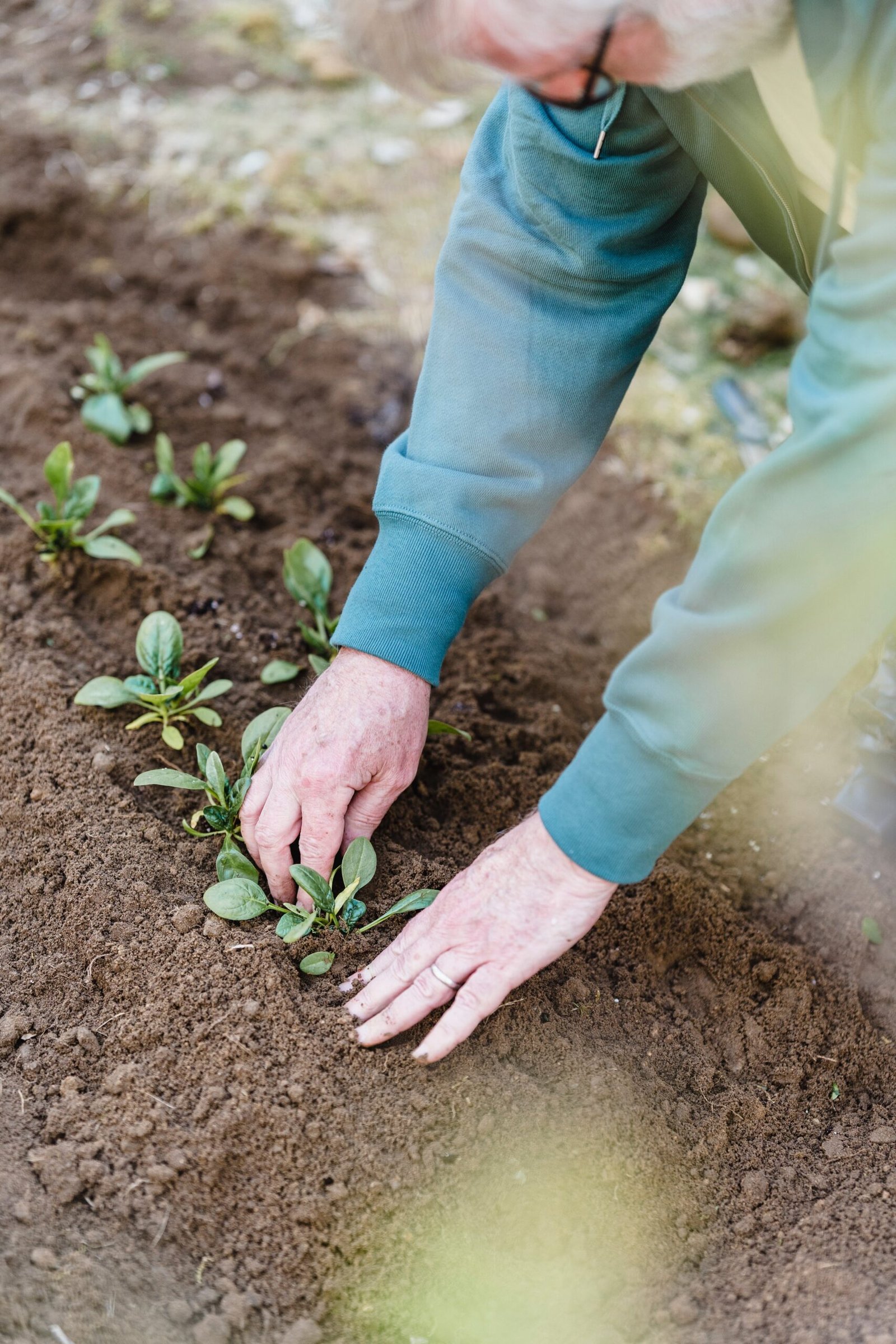
Choosing the Right Container
When it comes to growing raspberries in containers, selecting the right container is crucial. Firstly, you need to consider the appropriate size for your container. Raspberries have deep roots, so opt for a container that is at least 18 inches deep. Additionally, ensure that the container has a diameter of at least 20 inches to allow ample space for the roots to spread.
Next, consider the material of the container. While there are various options available, such as plastic, clay, or wood, it is important to choose a material that is durable and provides good insulation. Plastic containers are lightweight, durable, and offer excellent insulation, making them a popular choice for growing raspberries. However, clay containers can also be used, but they may require more frequent watering due to their porous nature.
One essential aspect of container gardening is proper drainage. Without adequate drainage, excess water can accumulate in the container, leading to root rot and other issues. To ensure proper drainage, drill several holes in the bottom of the container. These holes will allow excess water to escape and prevent waterlogging, promoting healthy root growth and overall plant health.
Preparing the Container
Before filling your container with soil and planting your raspberry plants, it is important to prepare it properly. Start by cleaning and sanitizing the container to ensure the elimination of any potential pathogens or pests that may harm your plants. Simply wash the container with warm water and mild soap, making sure to remove any dirt or debris.
Creating drainage holes in the container is another vital step in preparation. As mentioned earlier, drilling holes in the bottom of the container will facilitate proper drainage and prevent waterlogging, which can be detrimental to raspberry plants. By allowing excess water to escape, these drainage holes ensure that the roots are not sitting in water, reducing the risk of root rot and other water-related issues.
To further promote drainage and prevent soil from becoming compacted at the bottom of the container, add a layer of gravel or stones before filling it with soil. This layer will help air circulation and prevent the soil from becoming waterlogged. It also assists in preventing the soil from being pushed out of the drainage holes during watering, ensuring that the soil remains stable and in place.
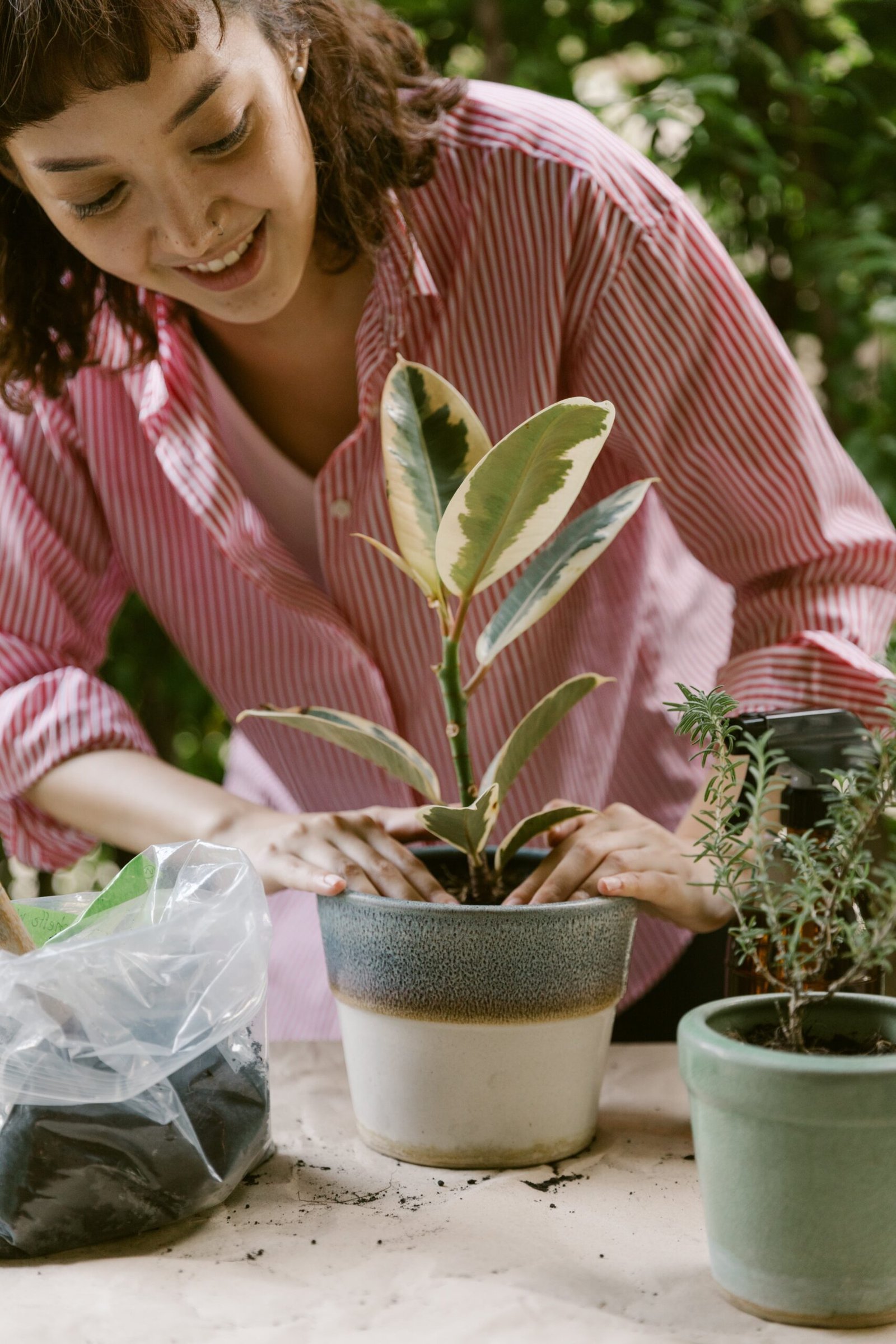
Selecting Raspberry Varieties
When it comes to selecting raspberry varieties for container gardening, there are several factors to consider. Firstly, determine the suitable varieties that can thrive in containers. Some raspberry varieties are better suited for container growing due to their compact growth habits and ability to adapt to limited space. Look for varieties labeled as suitable for container or patio gardening.
Another important consideration is evaluating the hardiness zones of the raspberry varieties. Hardiness zones determine the climate conditions and temperature ranges in which plants can thrive. Raspberry plants are typically labeled with the hardiness zones they can tolerate. Make sure to choose raspberry varieties that are well-suited for your specific hardiness zone to ensure optimal growth and fruit production.
Consider dwarf or compact raspberry varieties as they are specifically bred for container cultivation. These raspberry plants have a more restrained growth habit, making them ideal for limited space gardening. Raspberries like ‘Raspberry Shortcake’ or ‘Baby Cakes’ are excellent compact varieties that can thrive in containers while still producing delicious fruits.
Sourcing Raspberry Plants
Once you have determined the suitable varieties for container growing, it’s time to source raspberry plants. You have several options when it comes to acquiring raspberry plants for your container garden. One option is to purchase raspberry plants from nurseries or garden centers. Ensure that the plants you purchase are healthy, disease-free, and labeled specifically for container cultivation.
If you’re feeling adventurous, you can propagate raspberry plants from cuttings. Take cuttings from healthy, established raspberry plants during the dormancy period. Plant the cuttings in a well-draining potting mix, keep them moist, and provide them with proper light conditions. With patience and care, these cuttings will develop roots, and you’ll have new raspberry plants ready for your container garden.
Another option for sourcing raspberry plants is to start from seeds. While this method requires more time and patience, it can be a rewarding experience. Purchase raspberry seeds from reputable seed suppliers and follow the instructions provided for germination and growing. Keep in mind that growing raspberries from seeds may take longer to establish and bear fruit compared to other methods of propagation.
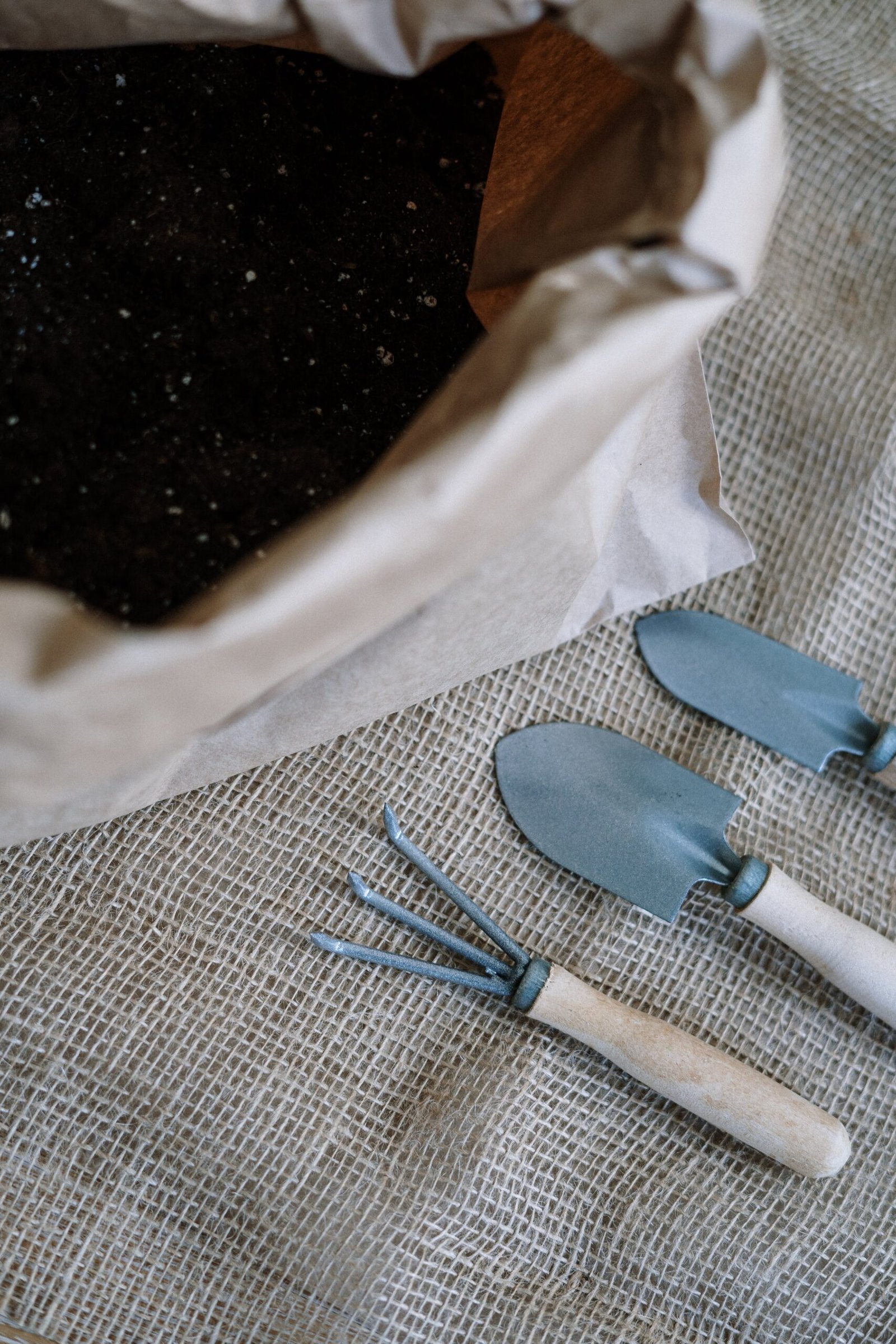
Preparing the Growing Medium
The success of your container-grown raspberries relies heavily on the quality of the growing medium. Choosing the right soil mix is crucial for providing the necessary nutrients and moisture retention for your plants. Select a well-draining potting mix specifically formulated for container gardening. Avoid using garden soil as it may not provide adequate drainage and can harbor pests and diseases.
To enhance the quality of the growing medium, add organic matter such as compost or well-rotted manure. This organic matter improves the soil structure, promotes beneficial microbial activity, and provides essential nutrients for healthy plant growth. Mix the organic matter evenly into the potting mix to ensure a well-balanced and nutrient-rich growing medium for your raspberry plants.
Ensuring proper pH levels in the growing medium is also important for raspberry plant health. Raspberries prefer slightly acidic soil with a pH range of 5.5 to 6.5. Test the pH of your potting mix using a soil testing kit and make the necessary adjustments with pH modifiers if needed. Maintaining the proper pH level will allow your raspberry plants to efficiently take up nutrients and thrive in their container environment.
Planting Raspberries in Containers
With your container prepared and the growing medium ready, it’s time to plant your raspberry plants. But before you do, consider creating a support system for your raspberries. As they grow, raspberry canes can become top-heavy and require support to prevent them from bending or breaking. Install a trellis or other support structure to provide stability and keep the plants upright.
When it comes to spacing raspberry plants in containers, ensure that each plant has enough room to grow and receive adequate sunlight. Place the plants at least 24 inches apart to allow for proper air circulation and minimize the risk of disease. This spacing will also prevent overcrowding and competition for resources among the plants.
Planting techniques can vary depending on the type of raspberry plant you’re working with. For bare-root plants, dig a hole large enough to accommodate the roots and place the plant in the hole, ensuring that the crown is level with or slightly above the soil surface. Gently fill in the hole with the potting mix, firming it around the roots.
For potted raspberry plants, remove the plant from its nursery container and gently loosen the roots. Place the plant in the center of the container, making sure the crown is level with or slightly above the soil surface. Fill the container with potting mix, firming it gently around the roots to ensure good contact between the roots and the soil.
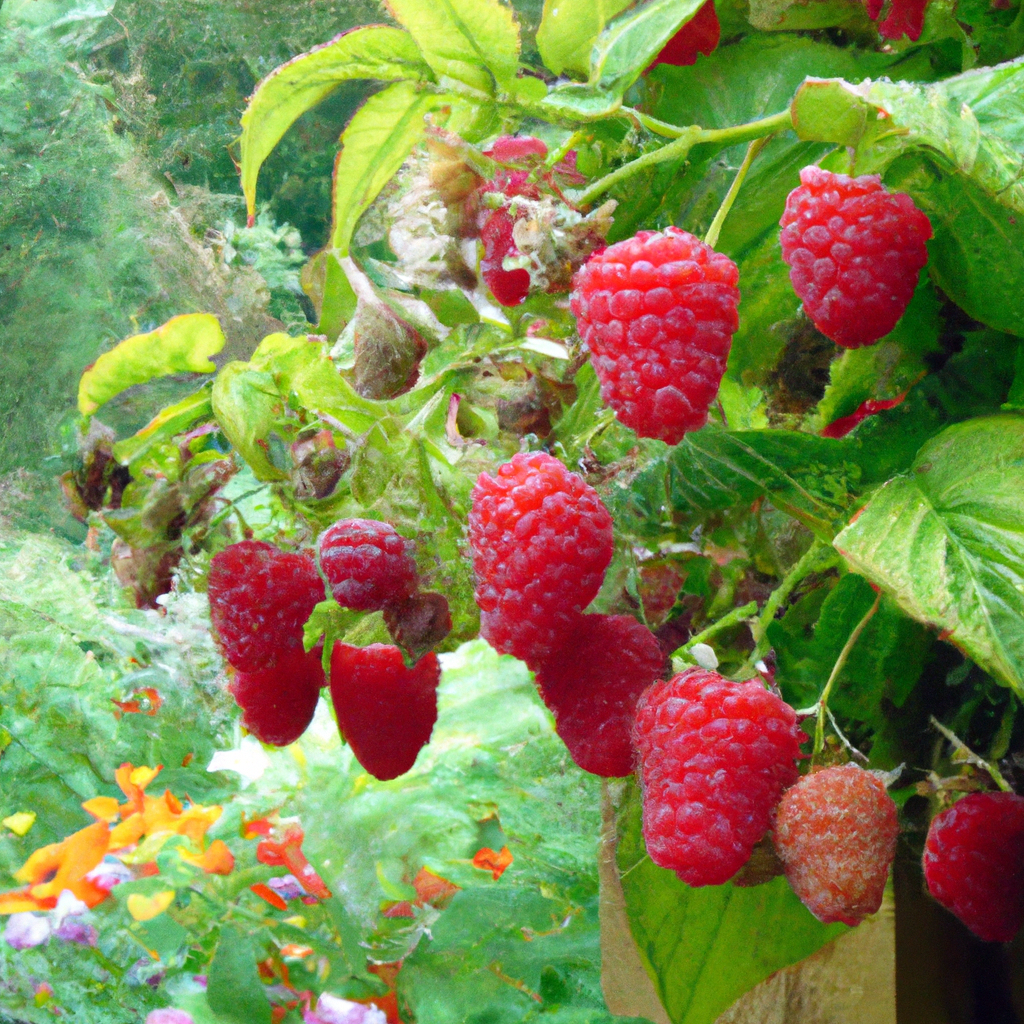
Essential Watering and Fertilization
Watering and fertilizing your container-grown raspberries are essential for their overall health and productivity. Determining the watering needs of your raspberry plants is crucial to prevent both under-watering and over-watering. As a general rule, raspberries need consistent soil moisture but should not be waterlogged.
Check the moisture level of the soil regularly by inserting your finger about an inch deep into the soil. If it feels dry at this depth, it’s time to water. Water thoroughly, ensuring that the entire root zone is moistened. Avoid shallow watering, as it can encourage shallow root growth and make the plants more susceptible to water stress.
Proper watering techniques are also important to prevent damage to the plants. Water the soil around the base of the plants, avoiding wetting the leaves or canes. Wet foliage can lead to fungal diseases, so it’s best to water early in the day to allow time for the foliage to dry before evening.
Fertilizing your container-grown raspberries is necessary to provide them with the essential nutrients they need for healthy growth and fruit production. Apply a balanced, slow-release fertilizer specifically formulated for fruit-bearing plants according to the package instructions. Avoid over-fertilizing, as it can lead to excessive vegetative growth at the expense of fruit production. Monitor the plant’s growth and adjust the fertilizer application as needed.
Sunlight and Temperature
Proper sunlight exposure plays a crucial role in the growth and productivity of your container-grown raspberries. Raspberries thrive in full sunlight, so choose a location that receives at least six hours of direct sunlight per day. Insufficient sunlight can result in weak growth and reduced fruit production.
While raspberries appreciate sunlight, excessive heat can pose challenges. Protect your container-grown raspberries from extreme heat by providing some shade during the hottest hours of the day, especially in regions with scorching summers. This can be achieved with shading materials or by strategically placing the containers in areas with filtered sunlight.
Similarly, raspberries are susceptible to damage caused by freezing temperatures. In colder regions, protect your container-grown raspberries from frost by moving them to a sheltered location like a garage or covering them with frost blankets. Monitor weather forecasts and take the necessary precautions to prevent damage from temperature fluctuations.
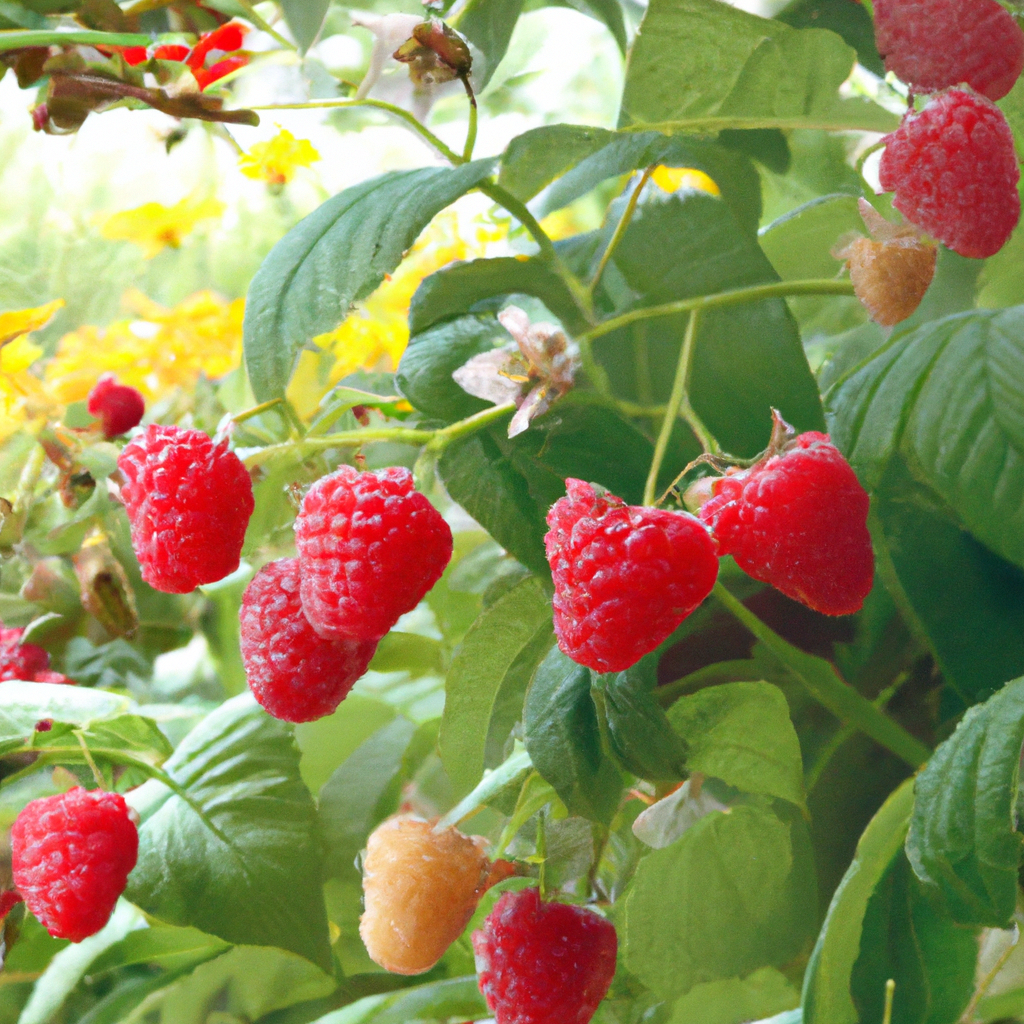
Pruning and Training Raspberries
Pruning is an important aspect of growing raspberries in containers to maintain their shape, encourage fruiting, and manage their growth habit. Proper pruning techniques help remove dead or diseased canes, increase air circulation, and promote the growth of new canes for future fruit production.
For container-grown raspberries, it is recommended to prune them annually during the dormant period, typically in late winter or early spring. Remove any canes that have fruited the previous year, as they will not produce fruit again. Thin out any weak or damaged canes to improve overall plant health and vigor.
Training your raspberry plants is also important to ensure optimal growth and fruit production. As the canes grow, tie them to the support system using soft plant ties or twine. This helps keep the canes upright and prevents them from sprawling or bending under the weight of their own growth or fruit. Regularly check the ties and adjust them as needed to avoid constricting the canes.
To encourage fruiting, selectively thin out the canes to create space for adequate air circulation and light penetration. This will result in stronger fruit production and larger berries. Be sure to follow specific pruning and training techniques recommended for the particular raspberry variety you’re growing to ensure the best results.
Pest and Disease Management
Like any garden plants, raspberries are susceptible to pest and disease issues. By identifying common pests and implementing organic pest control methods, you can effectively manage and prevent infestations in your container-grown raspberries.
Common pests that can affect raspberries include aphids, mites, and raspberry fruitworms. To mitigate these pests, encourage natural predators such as ladybugs and lacewings, or use organic insecticidal soaps or neem oil as a treatment option. Regularly inspect your plants for signs of pest infestation and take prompt action to prevent damage.
Another important aspect of pest management is implementing proper sanitation practices. Regularly remove fallen leaves, fruits, and other plant debris from around your raspberry plants to minimize the risk of attracting pests or harboring disease-causing organisms. Dispose of the debris appropriately to prevent reinfestation.
Despite your best efforts, raspberry plants can still encounter common diseases such as powdery mildew and root rot. To prevent these diseases, ensure good air circulation around the plants by pruning and thinning as necessary. Avoid overwatering, as moist conditions can create a conducive environment for fungal growth. If necessary, apply organic fungicides to protect your plants from disease.
By following these comprehensive guidelines for growing raspberries in containers, you can enjoy a bountiful harvest of delicious berries in even the most limited garden spaces. Container gardening provides an excellent opportunity to grow your own raspberries, regardless of your available space. With proper care and attention, your container-grown raspberries will thrive and reward you with sweet and juicy fruits year after year.





